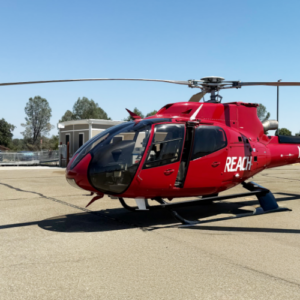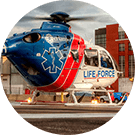Caring for aging parents can be a difficult journey, made harder when distance is involved. Whether you live a few hours away or across the globe, being a long-distance caregiver requires planning, clear communication and a strong support system. With more than seven million Americans serving as long-distance caregivers,* it’s important to understand the ins and outs to help ensure your loved ones are safe and well cared for—even when you’re not physically there.
The first step in long-distance caregiving is compiling important medical and financial information. This includes obtaining written permission to access your parents’ medical records, their health history, and organizing insurance and financial documents. Having access to this information allows you to advocate for their care, make informed decisions during emergencies and assist with managing their daily needs. Being added to at least one financial account can also help you step in quickly if unexpected expenses arise.
Creating a safe home environment is important to avoid accidents. From installing grab bars, removing trip hazards, like throw rugs and wires and fall detection devices to hiring professional organizers or home safety specialists, there are many ways to reduce risks for older adults. Part of creating a safe environment is building a local support network. Neighbors, friends and community services can act as your eyes and ears when you are away.
In the event of a serious medical emergency, having the authorization to step in for medical and financial decision making is very important. Consulting with a lawyer about legal documents, like advanced directives and power of attorney, is critical. Without these documents, your ability to care for a parent’s financial and physical needs when they can’t make decisions will be impacted.
If your parent lives far from a hospital, or if they are snowbirds living away from their usual care, even overseas, ensuring they can afford air ambulance care is important. With AirMedCare Network membership, there are no out-of-pocket costs for the care they will receive for an emergency transport on a medically equipped airplane to a hospital or from a hospital closer to loved ones back home.
Long-distance caregiving can be emotionally taxing, so don’t forget to care for yourself as well as your loved one. Whether you’re considering moving closer to your parents or managing care from abroad, remember that you’re not alone. With the right preparation and resources, you can provide needed support and maintain a strong relationship with your elderly parents, no matter the distance.
Frequently Asked Questions:
If an AirMedCare Network Provider does not transport you, you will be responsible for payment. Our membership program only covers transports provided by our affiliates.
There is no limit to the number of transports a member may take in a year. Each transport is handled the same way and must be an emergent or time-sensitive transport as determined by a physician (or other appropriate provider) or first responder unaffiliated with AMCN.
With an AirMedCare Network membership, any person or persons who reside under one (residential) roof are covered. In the event we have a member who lives in a duplex or apartment complex, we designate the primary member’s residence/address— that is considered the “one roof”. Undergraduate college students can be covered under their parent’s membership as well as anyone previously residing in the household who is then moved to a permanent care facility.

Does Medicare cover Air Ambulances?
Why to Consider AirMedCare Network Membership Imagine needing emergency medical help and not worrying about the cost. That’s what AirMedCare Network (AMCN) offers. With over

Tips for Staying Healthy on a Cruise
Cruising blends adventure with relaxation while exploring the world. But with so many fellow travelers on board in close quarters, endless temptations at the buffet

Global Medical Response to Open First Dedicated Air Medical Base on Oahu
New 24/7 critical-care helicopter, arriving in the fall, will ease rising EMS demand HONOLULU, Hawaii (July 22, 2025) — When rush-hour traffic brings Northshore and




